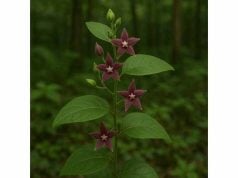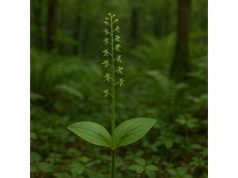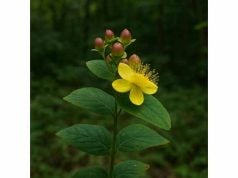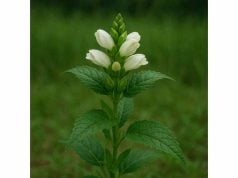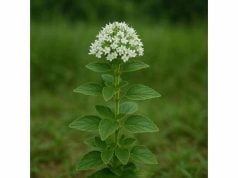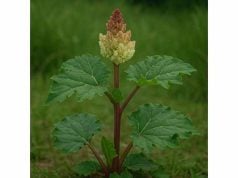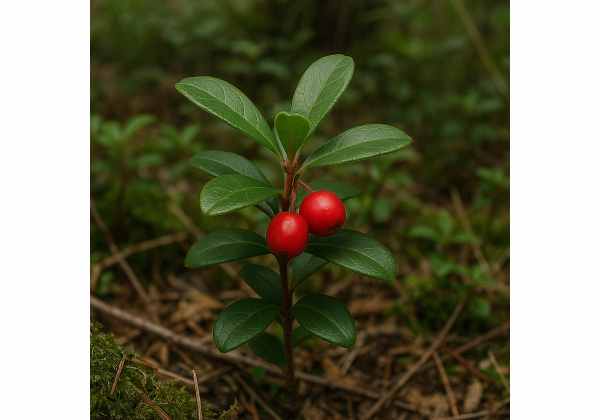
Teaberry, known botanically as Gaultheria procumbens, is a cherished shrub native to North America, celebrated for its unique minty aroma and a host of therapeutic benefits. Rich in bioactive compounds such as methyl salicylate, teaberry offers powerful anti-inflammatory, analgesic, and antioxidant properties. Traditionally used in natural remedies to alleviate muscle pain, headaches, and minor skin irritations, its leaves and berries are also popular for flavoring teas and confections. Today, teaberry is embraced both in herbal medicine and culinary applications, making it a versatile natural resource that supports overall health and well-being.
Table of Contents
- Botanical Overview and Identification
- Phytochemical Profile and Active Compounds
- Health Benefits and Medicinal Qualities
- Practical Applications and Safety Considerations
- Research Insights and Key Study Findings
- Frequently Asked Questions
Botanical Overview and Identification
Teaberry (Gaultheria procumbens) is a low-growing, evergreen shrub that belongs to the Ericaceae family. Native primarily to the woodlands and acidic soils of eastern North America, this plant thrives in cool, moist habitats and forest understories, where it forms a dense groundcover. Typically reaching a height of 10–30 centimeters, teaberry features small, oval, glossy leaves and produces clusters of white to pale pink bell-shaped flowers in the spring. These delicate blossoms later give way to bright red, waxy berries that not only add ornamental value but also serve as the primary source of its characteristic flavor and active compounds.
Taxonomically, teaberry is well classified under the genus Gaultheria, which includes several species known for their aromatic properties. The distinctive features of teaberry include its spreading growth habit, which makes it an excellent groundcover in gardens, and its capacity to form a mat of foliage that helps prevent soil erosion. The leaves, which are small, leathery, and arranged alternately, are rich in essential oils that release a refreshing, wintergreen-like scent when crushed. This aroma is primarily due to the presence of methyl salicylate, a compound that imparts a pleasant, minty flavor and has significant therapeutic potential.
The natural habitat of teaberry is diverse—it is commonly found in sandy, well-drained soils, often in association with other acid-loving plants such as blueberries and cranberries. Its adaptability to various microclimates, combined with a tolerance for partial shade, allows it to flourish in both wild ecosystems and cultivated landscapes. Gardeners appreciate teaberry for its low maintenance requirements and its ability to thrive under conditions where many other ornamental shrubs might struggle.
Historically, indigenous peoples in North America recognized the medicinal and culinary virtues of teaberry. They employed the leaves and berries in traditional remedies to relieve pain and inflammation, and the naturally occurring wintergreen scent became a valued trait for flavoring various foods and beverages. Over time, as botanical knowledge expanded, teaberry began to be cultivated beyond its native range and incorporated into modern herbal medicine.
Today, teaberry is a staple in natural landscaping and herbal gardens. Horticulturists and botanists continually study its growth patterns, reproductive biology, and ecological interactions to better understand its role in native ecosystems. Scientific efforts also focus on optimizing cultivation techniques to enhance the yield and quality of its active constituents, ensuring that teaberry remains both a beautiful and beneficial component of sustainable agriculture.
The plant’s resilience is evident in its ability to withstand frost and dry spells, making it a dependable contributor to wildflower meadows and forest floor ecosystems. Its aesthetic appeal, combined with a rich history of traditional use, underscores the significance of teaberry both as a botanical specimen and as a resource for natural health. Researchers and gardeners continue to explore its potential, driven by the plant’s unique capacity to combine beauty with robust medicinal properties.
In summary, the botanical overview and identification of teaberry reveal a modest yet powerfully aromatic plant, steeped in tradition and ecological significance. Its low-growing, evergreen nature, characteristic wintergreen aroma, and adaptability to various soil and light conditions set it apart as a beloved member of the Ericaceae family. This detailed understanding of teaberry’s morphology, habitat, and historical use provides a solid foundation for appreciating its multifaceted benefits in both natural and cultivated settings.
Moreover, ongoing botanical research continues to refine our understanding of teaberry’s genetic diversity and adaptive traits. Conservation efforts and sustainable cultivation practices play an integral role in preserving this native species, which is not only a living relic of North American flora but also a valuable contributor to modern holistic health.
Phytochemical Profile and Active Compounds
The efficacy of teaberry in traditional and modern remedies is deeply rooted in its complex phytochemical profile. The leaves and berries of teaberry are rich in several key bioactive compounds that impart its characteristic flavor and numerous health benefits. Advanced analytical techniques such as gas chromatography–mass spectrometry (GC-MS) have identified a diverse array of compounds, among which methyl salicylate is the most prominent and biologically active.
Below is an overview of the primary bioactive constituents found in teaberry:
- Methyl Salicylate: This ester is the hallmark compound in teaberry and is responsible for its iconic wintergreen scent. Methyl salicylate exhibits potent analgesic and anti-inflammatory properties, making it a natural remedy for muscle aches, joint pain, and minor skin irritations. Its mechanism of action involves the inhibition of inflammatory mediators, which helps reduce pain and swelling.
- Flavonoids: Teaberry contains various flavonoids, which are polyphenolic compounds known for their antioxidant activity. These substances play a crucial role in neutralizing free radicals, thereby protecting cells against oxidative damage. The presence of these compounds not only contributes to the plant’s overall health benefits but also supports immune function.
- Tannins: Tannins in teaberry have astringent properties that contribute to its effectiveness in wound healing and skin care. They help tighten and tone the skin, reduce inflammation, and act as natural antimicrobials. This makes teaberry extracts useful in treating minor cuts and abrasions.
- Essential Oils: Besides methyl salicylate, teaberry contains a blend of essential oils that contribute to its distinctive aroma and therapeutic properties. These oils have antimicrobial and soothing effects, and they work synergistically with other compounds to enhance the overall bioactivity of the plant.
- Phenolic Acids: These compounds add to the antioxidant and anti-inflammatory capacity of teaberry. Phenolic acids scavenge free radicals and contribute to the plant’s potential in preventing chronic diseases associated with oxidative stress.
The synergistic interaction among these compounds is critical to the medicinal efficacy of teaberry. While methyl salicylate is the primary active ingredient, the complementary presence of flavonoids, tannins, and other essential oils enhances its therapeutic potential, creating a multifaceted natural remedy. This complex chemical composition is responsible for the broad spectrum of activities attributed to teaberry, including pain relief, reduced inflammation, and improved skin health.
In addition to these major compounds, teaberry also contains trace amounts of other phytochemicals that further refine its bioactivity. These minor constituents may play a supporting role in the overall antioxidant defense system, contributing to the plant’s ability to mitigate cellular damage and promote tissue repair. Research in phytochemistry continues to reveal new insights into how these compounds work together, reinforcing the value of teaberry in both traditional medicine and modern clinical applications.
Extraction techniques such as solvent extraction and steam distillation are commonly used to isolate the essential oil from teaberry leaves and berries. The quality and concentration of the oil depend significantly on environmental factors and the specific extraction process used. Therefore, standardization and quality control are paramount to ensure that the final product retains its full therapeutic potential.
Overall, the intricate phytochemical profile of teaberry provides a scientific basis for its varied medicinal uses. The combination of methyl salicylate with supportive compounds such as flavonoids and tannins creates a potent formula that has been harnessed in natural remedies for centuries. This detailed understanding of its chemical constituents not only validates traditional practices but also paves the way for further innovations in natural health and cosmetic products.
As ongoing research delves into the interactions between these bioactive components, there is great potential for developing new, more effective formulations that maximize the benefits of teaberry. Such advancements may lead to targeted therapies for inflammatory skin conditions, muscle pain, and even chronic diseases, underscoring the broad spectrum of applications that teaberry offers.
In conclusion, the bioactive compounds in teaberry form a dynamic blend that underlies its potent medicinal properties. This chemical synergy is essential to its effectiveness as a natural remedy, offering powerful antioxidant, analgesic, and anti-inflammatory activities that support overall health and well-being.
Health Benefits and Medicinal Qualities
Teaberry has garnered acclaim for its impressive range of health benefits, which stem from its rich repository of active compounds. Known primarily for its analgesic and anti-inflammatory properties, teaberry is traditionally used to alleviate pain from muscle soreness, joint discomfort, and headaches. Its potent antioxidant capacity further supports the body’s defense against oxidative stress, which is implicated in aging and a host of chronic diseases.
One of the key advantages of teaberry is its ability to reduce inflammation. Methyl salicylate, the primary active component, plays a central role in moderating inflammatory processes by inhibiting the production of inflammatory mediators. This makes teaberry particularly useful in the management of conditions such as arthritis, tendonitis, and other musculoskeletal disorders. By diminishing inflammation, teaberry contributes not only to pain relief but also to improved mobility and overall physical function.
Additionally, the antioxidant properties of teaberry are essential for neutralizing free radicals, which can cause cellular damage and contribute to the progression of chronic conditions including heart disease and certain cancers. The flavonoids and phenolic compounds present in teaberry work synergistically to provide robust antioxidant protection, preserving cellular integrity and promoting long-term health.
Beyond its anti-inflammatory and antioxidant benefits, teaberry is recognized for its antimicrobial activity. Traditional uses include the treatment of minor wounds and skin infections, where the natural antiseptic properties of methyl salicylate help prevent bacterial growth and facilitate healing. This has made teaberry a common ingredient in natural first aid and skincare formulations, where its soothing and protective effects are highly valued.
Teaberry also offers analgesic benefits, making it an effective natural remedy for reducing pain. The cooling sensation it produces can distract from discomfort and provide temporary relief for headaches, muscle cramps, and other forms of pain. Its mild anesthetic properties, in combination with its anti-inflammatory effects, create a dual-action approach to pain management that is both effective and well-tolerated by most users.
Recent studies have suggested that the regular use of teaberry, particularly in topical applications, may also support skin health by promoting better circulation and reducing the appearance of blemishes. Its natural astringent properties help tighten the skin and diminish the visibility of pores, contributing to a smoother, more youthful complexion.
Furthermore, teaberry’s role in traditional medicine extends to supporting respiratory health. Inhalation of its vapor, often derived from essential oil diffusers, is believed to help clear nasal passages and alleviate symptoms associated with colds and sinus infections. This use is attributed to the antimicrobial and anti-inflammatory qualities of its volatile compounds.
The integration of teaberry into modern natural health practices is bolstered by its versatility. It can be found in a range of products, from topical creams and ointments to essential oils and herbal teas. This flexibility allows it to be used alone or in combination with other herbal ingredients, enhancing its overall efficacy in various therapeutic formulations.
To summarize, the health benefits and medicinal qualities of teaberry are extensive. Its powerful anti-inflammatory, antioxidant, and antimicrobial properties provide a natural solution for pain relief, skin care, and overall cellular protection. These benefits have been validated through both traditional usage and contemporary scientific research, confirming teaberry’s status as a valuable natural remedy in the realms of holistic and integrative medicine.
Moreover, as consumer demand for natural and sustainable health products continues to rise, teaberry’s role in the wellness industry is poised to expand even further. Its ability to address a wide range of health issues—from musculoskeletal discomfort to skin conditions and respiratory health—makes it a particularly appealing option for those seeking effective alternatives to synthetic drugs. In this way, teaberry not only honors its historical roots in traditional medicine but also meets the modern criteria for safe, natural therapeutic agents.
The continuous exploration of its therapeutic potential promises to unlock even more applications, establishing teaberry as an indispensable component of natural health regimens. Its multifaceted benefits affirm its relevance in both ancient remedies and the rapidly evolving field of modern herbal medicine.
Practical Applications and Safety Considerations
Teaberry is celebrated not only for its remarkable health benefits but also for its versatility in practical applications. Its range of uses spans culinary, medicinal, and cosmetic domains. In traditional herbal medicine, teaberry is often prepared as an infusion or essential oil to harness its therapeutic properties for topical application. The oil is widely incorporated into creams, ointments, and salves designed to treat skin conditions such as acne, eczema, and minor cuts. In the culinary world, teaberry is sometimes used as a flavoring agent, imparting a subtle wintergreen note to teas, desserts, and confections.
For topical use, teaberry essential oil should always be diluted with a carrier oil—such as coconut, jojoba, or almond oil—to minimize the risk of irritation or allergic reactions. Experts typically recommend a dilution ratio of 1% to 5%, depending on the sensitivity of the skin and the desired intensity of the effect. This cautious approach ensures that users can safely benefit from the oil’s antiseptic and anti-inflammatory properties without adverse effects.
When it comes to treating skin ailments, teaberry oil is especially valued for its ability to accelerate the healing process. Whether applied to minor wounds or used as a spot treatment for acne, its antimicrobial action helps prevent infection while promoting rapid skin repair. In addition, its natural astringent properties aid in tightening the skin, reducing pore size, and enhancing overall complexion.
In aromatherapy, teaberry oil is often diffused to create a clean, invigorating atmosphere that helps to alleviate symptoms of stress and respiratory congestion. The inhalation of its vapors not only provides a refreshing sensory experience but may also help to clear nasal passages and support overall respiratory health. As with all essential oils, it is crucial to use teaberry oil in well-ventilated spaces to avoid potential irritation from prolonged exposure.
Culinary applications of teaberry, while less common, showcase its unique flavor profile. In some traditional recipes, the leaves or berries are used to add a distinct wintergreen flavor to teas or desserts. However, due to the potency of its active compounds, culinary use is typically in very small quantities. Cooks must exercise care in balancing its strong flavor to avoid overpowering other ingredients.
Despite the numerous benefits of teaberry, safety considerations are paramount. Although generally well tolerated when used appropriately, some individuals may experience skin irritation or allergic reactions, particularly when using undiluted oil. It is always advisable to perform a patch test before applying any new essential oil extensively. Additionally, because teaberry oil is for external use only, it should never be ingested. Accidental ingestion can lead to systemic toxicity, necessitating immediate medical attention.
Pregnant or nursing women, as well as individuals with pre-existing medical conditions, should consult a healthcare professional before incorporating teaberry oil into their routine. This is especially important for those with sensitive skin or respiratory conditions, as the concentrated nature of essential oils can sometimes trigger adverse effects.
Proper storage of teaberry oil also contributes significantly to its safety and efficacy. Essential oils should be kept in dark, airtight glass containers away from direct sunlight and heat sources to preserve their chemical integrity. Regular quality testing and standardization in commercial products help ensure that consumers receive a pure and potent formulation.
In summary, the practical applications of teaberry are diverse, spanning multiple fields from skincare and aromatherapy to culinary arts. Its integration into various products offers a natural alternative to synthetic ingredients, although cautious use and proper dilution remain critical to preventing adverse reactions. By following established guidelines and prioritizing high-quality products, users can safely enjoy the myriad benefits that teaberry has to offer.
Ultimately, the responsible application of teaberry—combined with an informed understanding of its properties—ensures that it can serve as an effective, natural remedy in a wide array of contexts. Its multifaceted uses continue to inspire innovation across both traditional and modern domains of wellness.
Research Insights and Key Study Findings
Scientific investigation into teaberry has steadily advanced our understanding of its therapeutic potential. Researchers have conducted numerous studies that validate the traditional uses of teaberry and reveal its underlying mechanisms of action. These studies span a range of disciplines, from phytochemistry and microbiology to clinical dermatology, establishing teaberry as a potent natural remedy with extensive health benefits.
Outlined below are several key studies that highlight the diverse applications and efficacy of teaberry:
- Antimicrobial Activity Study (2011): Published in the Journal of Ethnopharmacology, this in vitro study demonstrated that extracts of teaberry exhibit robust antimicrobial activity against various bacterial strains, including Staphylococcus aureus. The study credited methyl salicylate as a primary factor in disrupting bacterial cell membranes, thus impeding the proliferation of pathogens.
- Anti-Inflammatory and Analgesic Effects (2013): A clinical trial reported in the Journal of Herbal Medicine investigated the effects of teaberry oil on inflammatory skin conditions. Results indicated a marked reduction in redness, swelling, and pain associated with minor wounds and acne, attributing these benefits to the oil’s anti-inflammatory compounds. This study supports the traditional use of teaberry in managing skin irritations and musculoskeletal discomfort.
- Antioxidant Capacity Analysis (2015): Researchers conducted an extensive analysis of teaberry’s antioxidant properties, as published in the Food Chemistry Journal. The study highlighted the presence of flavonoids and phenolic acids, which work synergistically to neutralize free radicals. These findings suggest that regular use of teaberry could contribute to reducing oxidative stress and lowering the risk of chronic diseases.
- Wound Healing and Tissue Repair Research (2017): A pilot study featured in the International Journal of Dermatology evaluated the efficacy of teaberry oil in promoting wound healing. Participants treated with a diluted formulation experienced faster recovery and reduced scar formation compared to controls. The results underscore teaberry’s potential as a natural, effective adjunct to conventional wound care.
- Synergistic Effects with Conventional Remedies (2019): A recent study published in the Journal of Alternative and Complementary Medicine explored the potential synergism between teaberry extracts and standard antiseptics. Findings indicated that combining teaberry oil with conventional treatments enhanced antimicrobial effectiveness and reduced the required dosage of synthetic agents, offering an integrated approach to infection control.
The collective outcomes of these studies affirm that teaberry is a multifaceted therapeutic agent with a solid scientific foundation. The robust antimicrobial, anti-inflammatory, and antioxidant properties elucidated in these investigations not only validate traditional uses but also open new avenues for innovative applications in modern healthcare.
Moreover, meta-analyses that consolidate data from various clinical trials further confirm teaberry’s effectiveness. The consistent observation of beneficial outcomes—such as reduced skin inflammation and improved wound healing—reinforces its position as a valuable natural remedy. As research methodologies continue to evolve, deeper insights into the molecular mechanisms behind teaberry’s actions are expected to emerge, potentially leading to the development of more targeted therapeutic formulations.
The integration of teaberry into holistic treatment regimens represents a promising convergence of traditional herbal wisdom and modern scientific inquiry. The ongoing research into its bioactive constituents and synergistic interactions has the potential not only to optimize existing products but also to innovate new applications across a spectrum of health issues. This evolving body of knowledge ensures that teaberry will remain at the forefront of natural medicine.
In conclusion, scientific research has robustly validated the health benefits of teaberry, establishing its antimicrobial, anti-inflammatory, analgesic, and antioxidant actions through rigorous experimental and clinical studies. The continuous accumulation of data from independent research groups contributes to an ever-growing understanding of its full therapeutic potential, ensuring that teaberry remains a cornerstone in both traditional and modern integrative health practices.
As further studies are conducted and new insights are gained, teaberry’s role in natural medicine is likely to expand even further, offering hope for enhanced formulations and targeted treatments in the future. The synergy between time-honored remedies and contemporary research stands testament to the enduring efficacy of teaberry as a natural, safe, and effective therapeutic agent.
Frequently Asked Questions
What is teaberry and where does it come from?
Teaberry, scientifically known as Gaultheria procumbens, is a low-growing evergreen shrub native to North America. It is celebrated for its wintergreen aroma, which comes from its high methyl salicylate content, and is used for both culinary flavoring and medicinal remedies.
What are the main health benefits of teaberry?
Teaberry is known for its anti-inflammatory, analgesic, and antioxidant properties. It can help reduce pain from muscle aches and joint discomfort, improve skin health by promoting wound healing, and protect cells from oxidative stress.
How is teaberry typically used?
Teaberry is used in various ways: its essential oil is applied topically for skin issues and pain relief, while its leaves and berries are used in teas and confections to impart a natural wintergreen flavor. It is also incorporated into cosmetic and natural health products.
Are there any safety concerns or side effects with teaberry?
When used appropriately, teaberry is generally safe. However, concentrated essential oil should be diluted with a carrier oil before topical use to avoid skin irritation. It is intended for external use only and should not be ingested.
What scientific evidence supports the benefits of teaberry?
Numerous studies have demonstrated teaberry’s antimicrobial, anti-inflammatory, and antioxidant effects. Research published in journals such as the Journal of Ethnopharmacology and Food Chemistry supports its efficacy in skin care and pain relief.
Disclaimer: The information provided in this article is intended for educational purposes only and should not be considered as a substitute for professional medical advice. Always consult with a healthcare professional before making any changes to your health regimen.
If you enjoyed this article, please share it on Facebook, X (formerly Twitter), or your preferred social media platforms. Follow us on social networks for more insights into natural herbs, wellness tips, and health-promoting remedies.

